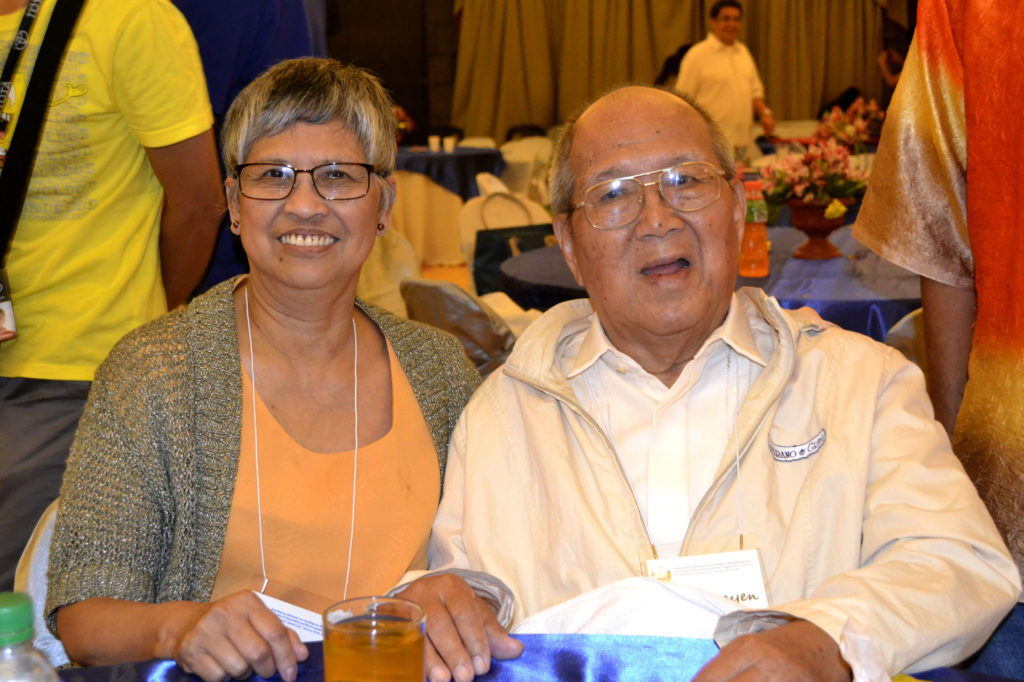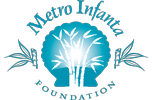By Mila Glodava
The last time I saw Bishop Julio Xavier Labayen, O.C.D., who died April 27, 2016, was in January 2013, when we celebrated 10 years of promoting stewardship and sustainability of the “Church of the poor” in the Philippines. It was the second time in eight years that he was with us at the plenary assembly of the Catholic Bishops Conference of the Philippines (CBCP). Bishop Labayen, along with His Eminence, Ricardo Cardinal Vidal, was responsible for our bringing the message of stewardship as a way of life to the Philippines.
At one of the seminars following the plenary assembly, Bishop Labayen asked me how my pastor was in Chicago. Since I live in Colorado, I realized then that he was beginning to forget things or people. This was understandable given his age at the time. Nevertheless, Bishop Labayen still showed his old self regarding the discussions and participated without any hesitation. He was keenly aware that stewardship and the Church of the poor go hand-in-hand.

When I first introduced stewardship to Bishop Labayen, my initial thought was to share my personal experience on the topic only with my home diocese, the Prelature of Infanta. I had no grandiose plan to go beyond the prelature. For one thing, who am I to think I could do such an endeavor? I thought I would just share the message of stewardship as a way of life with the prelature, and then return to the United States, and that would be all.
This introduction happened during a short visit to the Philippines in December 2000. I asked Bishop Labayen if I could speak to his clergy to inform them of Metro Infanta Foundation, a U.S. non-profit organization, and how it might help them. At the meeting, I described not only the foundation but also my own work for the Church at St. Thomas More Parish in Centennial, Colorado, teaching and implementing stewardship as a way of life. In fact, seeing the fruits of stewardship was the reason I created the foundation.
I wasn’t sure how the clergy received my message. Shortly, however, after my return to the United States, I received an email message from Deacon Mario Van Loon, who, at the instruction of Bishop Labayen, requested a visit to Denver. His visit would lead to other visits from Bishop Labayen himself and other priests who had an opportunity to observe stewardship lived at St. Thomas More Parish. Father Andrew Kemberling, pastor and an expert in stewardship, had taken the parish to new heights with his inspired teachings on the spirituality of stewardship. The visiting priests were convinced that this way of life is the key to their journey towards becoming the Church of the poor, which remains a dream for the Philippine Church.
In 1991, the Second Plenary Council of the Philippines proclaimed: “Following the way of the Lord, we opt to be the Church of the poor.” Yet ten years later, during the 2001 National Pastoral Consultation on Church Renewal, an evaluation of their progress as Church of the poor resulted in mixed reviews. Some did not want to call themselves the Church of the poor, and would not have anything to do with it. Others did not want to change from the Christendom model to the “Church of the poor” model. Still others, however, wanted the latter model and took steps to make it happen. Bishop Labayen was among the first to embrace the “Church of the poor” model. Although it took a few years, his initiative started to get some traction. As it turned out, too, this would also begin my active association with Bishop Labayen.
As I said earlier, I did not have any grandiose plan to introduce stewardship to the entire Philippine Church. I just wanted to share my parish experience in the United States with my home diocese. In 2002, Bishop Labayen graciously invited me to give a presentation on stewardship to the clergy of the Prelature of Infanta. At this presentation, he saw the Spirituality of Stewardship as a key to sustainability of the Church of the poor and wanted to share it with other bishops and clergy. Bishop Labayen remembered that in February 1999, at a gathering called, “An Encounter of the Pastor and the Flock towards a New Way of Being Church,” His Eminence Cardinal Ricardo Vidal suggested that they get together again to nurture the encounter. Bishop Labayen thought that the same group might be interested in hearing about the message of stewardship as a way of life to plant the seed of stewardship to a wider audience.
Thus, in 2003, Cardinal Vidal convened another gathering in Talisay City, Cebu, with about 70 participants, including bishops, clergy and lay leaders, to “create a culture of stewardship” adopted in the reality of the Philippine Church. Father Andrew and I gave presentations on stewardship at the “First Inter-Diocesan Conference on Sustainability of the Church of the Poor, January 17-23, 2003. With the aid of Socio Pastoral Institute, support of Father Andrew, and funding from St. Thomas More Parish, the 2003 conference committed to assimilate, translate, and disseminate the message of stewardship in the Philippine Church. In 2005, Cardinal Vidal and Bishop Labayen generated interest in stewardship among the bishops to allow us to give the CBCP our first day-long presentation on stewardship.
Today, thanks to Bishop Labayen and Cardinal Vidal’s vision, more bishops have embraced the message of stewardship in conjunction with the Church of the poor. Among those who have embraced stewardship as a way of life are Archbishop Socrates Villegas, Bishop Mylo Vergara, Bishop Antonio Tobias, and a few more have implemented it in their dioceses. I am very grateful to Bishop Labayen for making Father Andrew and me part of this important movement in the Philippine Church.
On a personal note, my gratitude to Bishop Labayen goes far beyond the stewardship. I will always be grateful to him for securing a scholarship and work study program at St. Paul College (now University) of Manila. I did not even know him then, nor did I know that Father Cayetano Serafines, whom I served as parish secretary in Burdeos, Quezon, recommended me to the bishop. I would see him occasionally at St. Paul’s and helped serve him breakfast when he said Mass there. But that was the extent of my dealings with him.
In 1972, after I married Mark Glodava, a former Peace Corps volunteer from New Jersey, we lived in the United States. Bishop Labayen would often stop in Colorado and visit with us. During his visits, I would usually arrange for him to give a talk, celebrate Mass at one of the parishes in Metro Denver, or surround him with friends who wanted to meet him. At one time in 1985, I arranged an interview with the Denver Catholic Register, and if I remember it right, in that article, he foresaw a revolution happening in the Philippines. Surely enough, the “People Power” movement and the EDSA Revolution happened in 1986. Nevertheless, I know that he still believed that true revolution is the “revolution of the heart.”
Yes, I kept Bishop Labayen busy when he visited Mark and me. I was in such awe of Bishop Labayen that I never knew what to say to him when he was around. My friends used to tease me about being speechless, something for which I’m not known. However, I devoured articles about him, read his books, and followed-up on his inspired ministry to the Philippine Church and beyond. I have known, therefore, of the many challenges he faced and the struggles he experienced because of his love for the poor. Yet, Bishop Labayen did not walk around looking like a stiff, serious, and somber man of God. “I love his great sense of humor,” said Dolly Banzon, one of my friends said, “and I enjoyed listening to his talks.”
If there’s anything more to say about him, however, it is this: He was a living saint then, and now I hope we can advance his cause for sainthood in the Universal Church.






